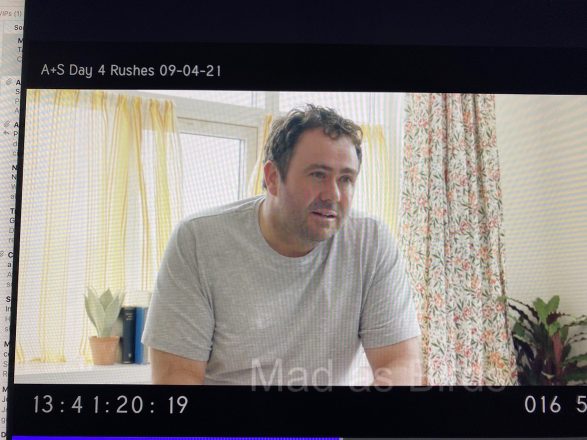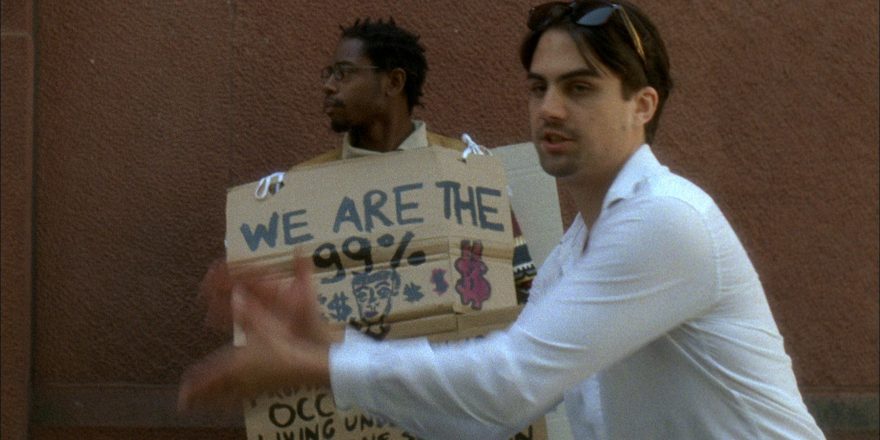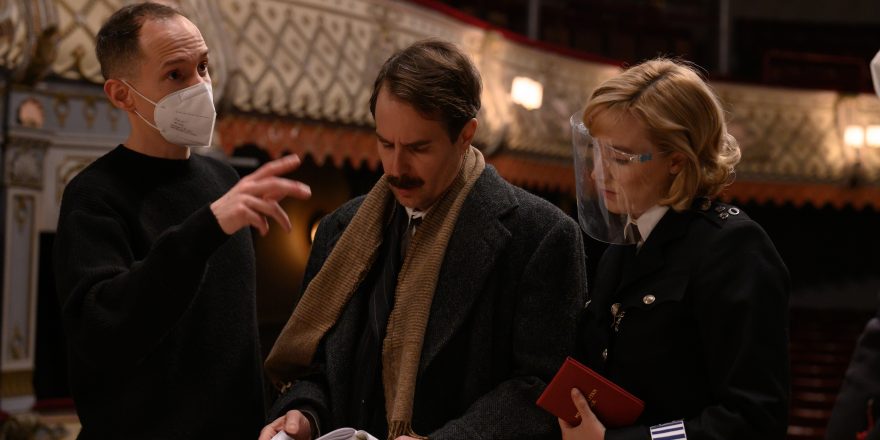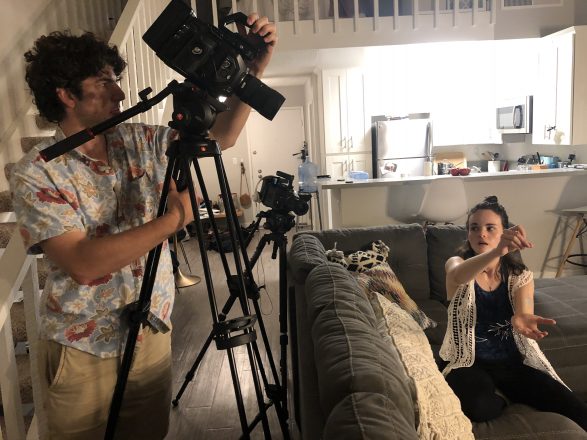No matter. Try again. Fail again. Fail better.” … I wish I shared Beckett’s optimism, but I guess that’s the security blanket of a theatre rehearsal room, where failure is essential and a passage for growth. I actually believe in it a lot, and as a teacher I would endlessly go on about “failing better” to my young students, to free them up on their creative journey. But today, failure feels too expensive.
It’s a cold March morning and I’m on a film set in Wrexham, North Wales, about to shoot a very ambitious scene in our film The Almond and the Seahorse. It’s a scene where my character, Joe, a TBI (traumatic brain injury) sufferer, is left alone in his apartment with instructions from his wife, Sarah (played by Rebel Wilson), to take his medicine. Joe can’t lay down any new memories at all, so what should be a quite simple exchange and action turns out to be an epic journey into the unknown as he leaves his pill, his multiple lit cigarettes, phone receivers and attentions scattered like marbles across their home, sending him into major confusion and distress. It’s like witnessing the slowest car crash … part Buster Keaton, part Bergman, but all of it centered on me. Or so it feels.
It is day two on the set of my feature debut as writer-director. How we even got to this point is hard to fathom, with COVID always ready to find different ways to interfere with the filming process, but we are here. Rebel filmed her first day yesterday and, apart from the trailers not turning up, the locations trying to kick us out, paparazzi hiding in trees and Rebel falling off her bike on the wet ground, I guess it went well! Charlotte Gainsbourg arrived and is isolating and Trine Dyrholm is a few days behind. It’ll be easier when I know everyone is here safely. But this morning, much to the financiers’ surprise, we are shooting a nine-page scene which is essentially about me taking a pill. As many of you in the world of storytelling already know, it’s all about the journey to moments like these.
I’d played the role of Joe years before in the stage version of The Almond and the Seahorse, so my concerns about wondering if the audience will understand the scene were assuaged. I remember standing in the wings at the time, thinking to myself, “Well, here goes – just hit the marks and tell the story, beat by beat, and leave it to the audience to piece together. Trust the work and trust the audience.” In hindsight, maybe it was actually more like, “Oh shit, I hope they like me!” What we did learn is that the audience pieces those fragments together beautifully, unafraid to engage emotionally and empathetically with Joe’s situation, which led us to think … could we put this on film?
The scene was a centerpiece in the play and has become a stand-out moment in the screenplay, so let’s hope it transfers to screen. Choreography is key and fluidity essential, marking clearly each moment so our Steadicam operator, Dan, can move with me in one take. From that base, we will pull the scene together from different angles. Most importantly, when it comes to the emotion, we won’t impose on it, but watch it play out. We’ll allow space and let the characters find their way in and out, because that is what the scene is really about, the privilege of witnessing a big moment that will only be remembered by the audience, and not Joe.
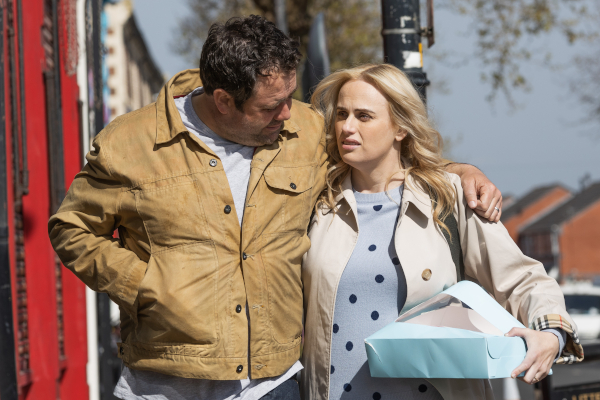
So, cigarettes were lit and smoked and not smoked and left in ashtrays. Pills were found and misplaced and found. Clocks were smashed (thank you to my make-up artist, Lily, who was surprisingly deft at clearing up my blood and picking out glass from my fist, much to the shock of our 1st A.D.), and the scene was captured. Before the first slate, I remember looking around at the apprehensive crew, thinking I could blow it here in one scene. After the last take, emotions were high and all of us were elated with a sense of achievement and a newfound feeling: “We can do this.” Twenty-two days later, we had a film in the can and I could add “Director” to my resume.
Very rarely is there a moment in one’s career where all your various roles and experiences collide at once. This scene felt equally brave and stupid, and now it exists as eight minutes of film within a feature film. An impossible challenge for me as an actor, a writer, a producer and a director, made possible by the act of … doing.
Sitting in a cinema at the Zurich Film Festival, where we premiered the film, all I was focused on was my cast and the audience and their emotional reaction to the film. The same happened at Dinard Film Festival a few days later, because I want them to feel what I feel and I want them to feel it freely and sincerely and with no tricks. The film is a story about the tragedy of goodbyes and the pain of being forgotten. It’s about broken hearts and broken brains, but, just like life, it doesn’t want you to waste a moment crying when there’s love to be had. It promises us that good times are ahead.
I have a great admiration for actors. I recognize their quiet bravery, and I don’t mean the soundbite-driven “Everyone should be impressed by my acting process outside of the story stuff,” but the emotional courage and imaginative agility they so generously share. I’ve had the privilege of watching icons of cinema grace my scripts with their talent, like Judi Dench, Elijah Wood, Jim Broadbent, Gerard Butler, Kelly Reilly, Shirley Henderson and Peter Mullan to name a few, and now Rebel, Charlotte and Trine. Why they say yes is down to them and the moral universe inside of us all, because I’m damn sure it’s not the money we pay! But, to me, one thing is clear – every one of them was willing to try and exceed their grasp and, at worst, fail better.
Featured image shows Celyn Jones during the making of The Almond and the Seahorse, courtesy Celyn Jones.


